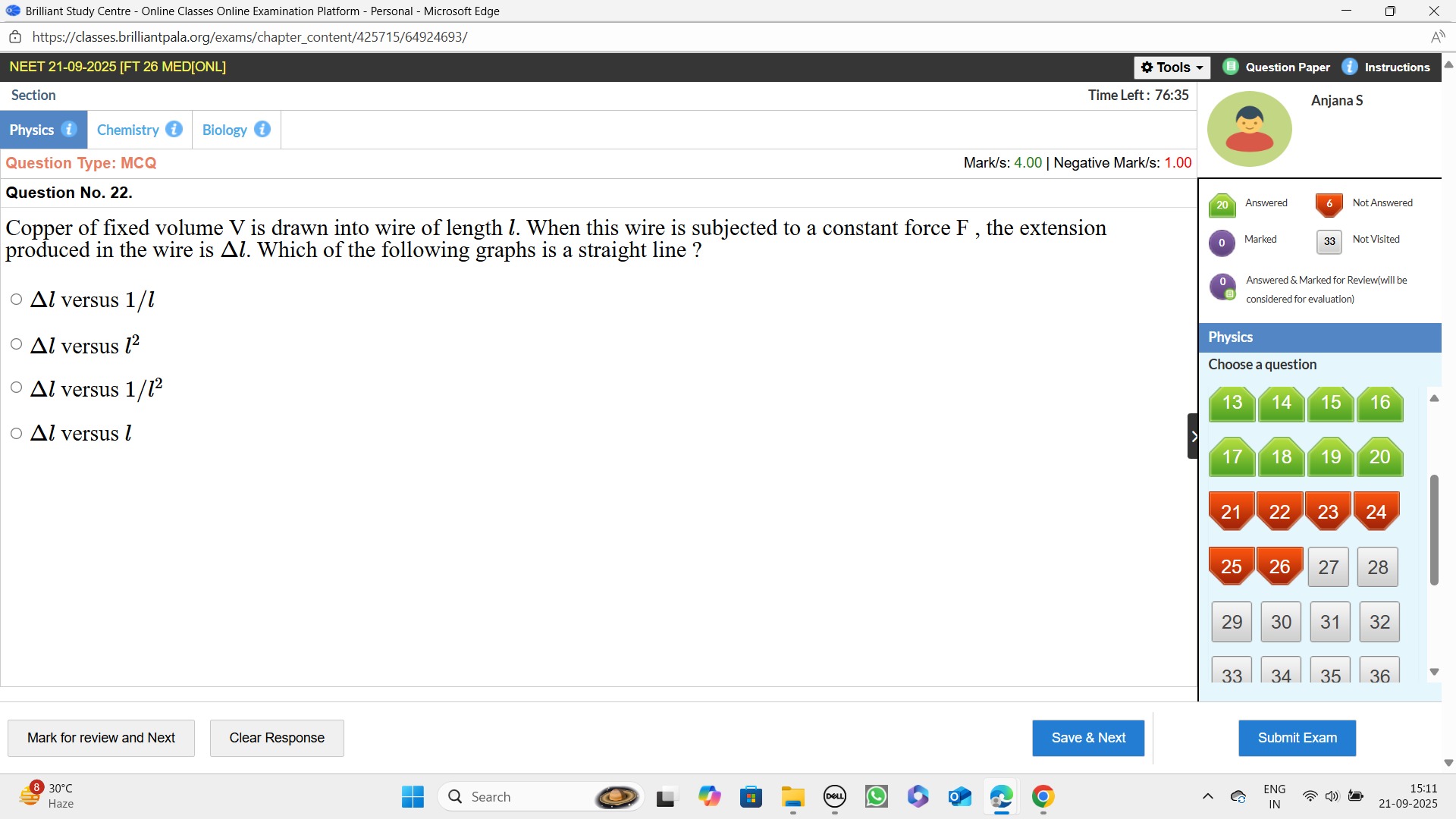Question
Question: Copper of fixed volume V is drawn into wire of length $l$. When this wire is subjected to a constant...
Copper of fixed volume V is drawn into wire of length l. When this wire is subjected to a constant force F, the extension produced in the wire is Δl. Which of the following graphs is a straight line ?

Δl versus 1/l
Δl versus l2
Δl versus 1/l2
Δl versus l
Δl versus l2
Solution
The Young's modulus (Y) of a material is defined as the ratio of stress to strain: Y=StrainStress
For a wire subjected to a tensile force F, the stress is AF, where A is the cross-sectional area. The strain is lΔl, where Δl is the extension and l is the original length. So, Y=Δl/lF/A=AΔlFl.
Rearranging this equation to find the extension Δl: Δl=AYFl
We are given that the wire is made from a fixed volume V of copper. The volume of a wire is given by V=A×l. From this, we can express the cross-sectional area A in terms of V and l: A=lV
Substitute this expression for A into the equation for Δl: Δl=(V/l)YFl=VYFl2
Since the force F, the volume V, and the Young's modulus Y of copper are constant, we can write this relationship as: Δl=Kl2 where K=VYF is a constant.
This equation shows that the extension Δl is directly proportional to the square of the length l. A graph of Δl versus l2 will be a straight line passing through the origin, with the slope equal to the constant K.
Let's examine the given options:
- Δl versus 1/l: If we plot Δl against 1/l, let x=1/l. Then l=1/x. The relationship becomes Δl=K(1/x)2=K/x2. This is not a linear relationship.
- Δl versus l2: If we plot Δl against l2, let x=l2. The relationship becomes Δl=Kx. This is of the form y=mx, which represents a straight line passing through the origin with slope m=K.
- Δl versus 1/l2: If we plot Δl against 1/l2, let x=1/l2. Then l2=1/x. The relationship becomes Δl=K(1/x)=K/x. This is not a linear relationship.
- Δl versus l: If we plot Δl against l, let x=l. The relationship becomes Δl=Kx2. This is a quadratic relationship, representing a parabola, not a straight line.
Therefore, the graph of Δl versus l2 is a straight line.
